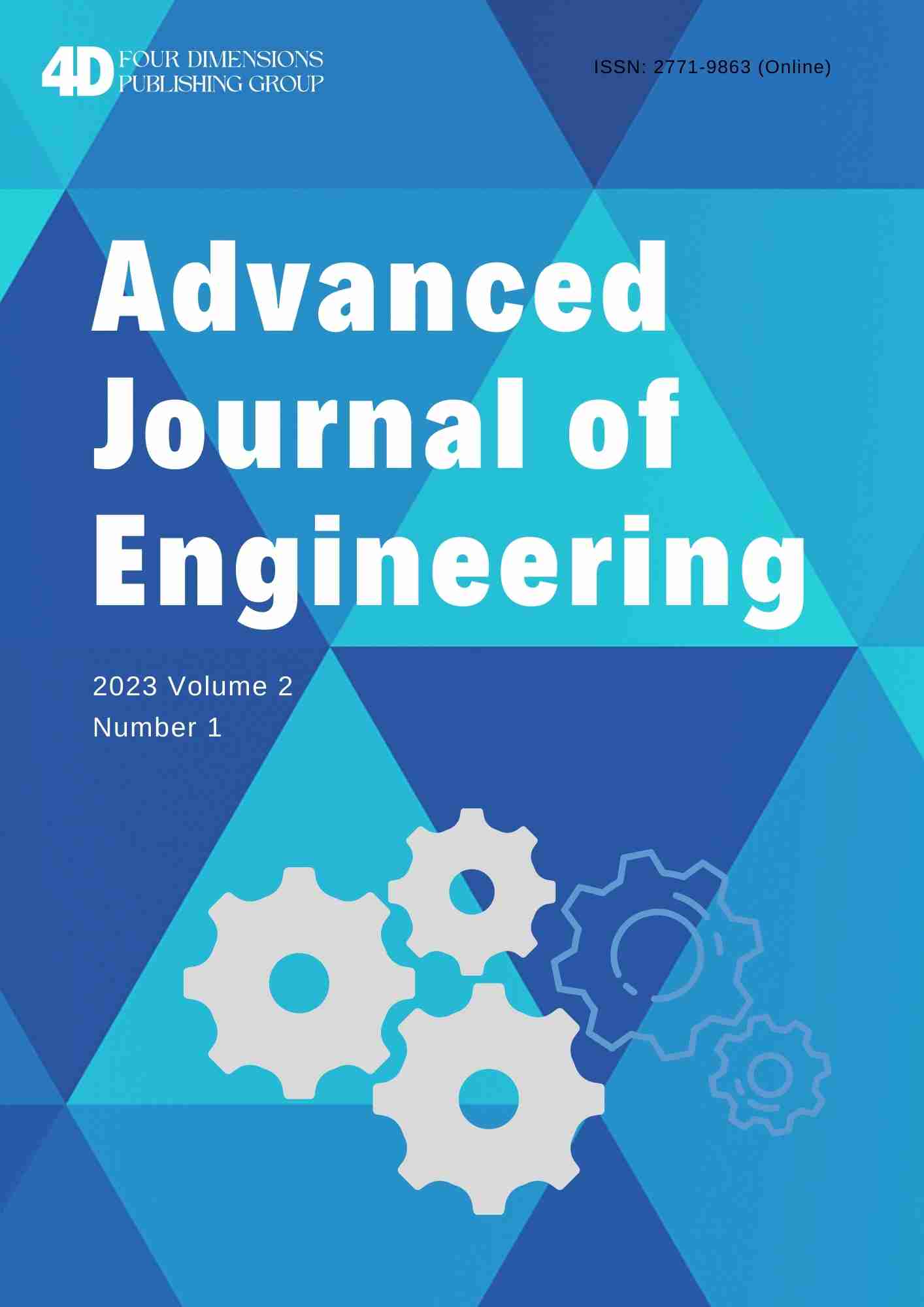
Advanced Journal of EngineeringOpen Access
Advanced Journal of Engineering[AJE] is an international peer-reviewed journal that publishes original and high-quality research papers in all related areas. All papers published will be open access to all readers. To build a platform for scientific research and academic exchange for scholars, focusing on the development and research, introducing worldwide research, theory and practice, and promoting international exchanges.
ISSN: N/A (Print)
Frequency: Bimonthly
ISSN: 2771-9863 (Online)
Website: https://doi.org/10.55571/aje
Email: journal@4dpublishinggroup.com /aje@4dpublishinggroup.com
Indexing and Abstracting:Google Scholar; CrossRef; ResearchBib; WorldCat; CiteFactor
Email: journal@4dpublishinggroup.com /aje@4dpublishinggroup.com
Indexing and Abstracting:Google Scholar; CrossRef; ResearchBib; WorldCat; CiteFactor
Study of Piled Raft Foundation on Layered Soil Subjected to Vertical Loading
DOI:https://doi.org/10.55571/aje.2024033
Authors:Xbhaskarendra Nath Patowary1 and Utpal Kumar Nath2
Affiliation:Department of Civil Engineering, Assam Engineering College, Guwahati, Assam, INDIA 2Civil Engineering, Assam Engineering College, Guwahati, Assam, INDIA
Information:Received: May 20 2023 / Accepted: May 29, 2024 / Published: June 16, 2024
Authors:Xbhaskarendra Nath Patowary1 and Utpal Kumar Nath2
Affiliation:Department of Civil Engineering, Assam Engineering College, Guwahati, Assam, INDIA 2Civil Engineering, Assam Engineering College, Guwahati, Assam, INDIA
Information:Received: May 20 2023 / Accepted: May 29, 2024 / Published: June 16, 2024
Abstract:Piled-raft foundations are a combination of a shallow foundation (raft) and a deep foundation (pile group). The role of the raft is to provide the required bearing capacity, and the piles are used mainly as settlement reducers, but they can also contribute to the bearing capacity. In this paper, a numerical model was developed using PLAXIS 3D software to analyze piled-raft foundations in layered soil, having a clay layer underlain by silty sand and then dense sand at the lower layer with a water table at a constant depth. A drained condition was assumed, and total vertical displacement was calculated using plastic deformation. The piles and raft were modeled using plate elements. A non-uniform vertical loading in the form of concentrated column loads was imposed on the piled raft. Firstly, models without piles have been taken into account. Then, four numbers of piles were introduced at half of the bay between the column positions. Another model with nine numbers of piles placed directly below the column positions was generated. Models with 16 piles placed at one-third of the bay and 24 piles placed at the column centerline in addition to one-third of the bay were prepared. In all the above models, the pile diameter, embedded length, and raft thickness were varied in the ranges of 300-500 mm, 10-18 m, and 300-400 mm, respectively, have been studied. As observed, the internal friction angle of soil played an important role in the settlement of piled raft foundation. As the pile length increases, the settlement decreases. The introduction of nine piles reduced the total settlement up to 43.39%, while for 16 and 24 piles, the reduction was up to 57.55% and 60.82%, respectively. However, a further increase in the number of piles does not contribute much to the further reduction of settlement of piled raft foundations. The raft thickness had a nominal effect on the settlement. Regarding the position of piles, the inclusion of piles below the column at a considerable distance from the column centerline exhibited good results than piles positioned just below the column.
Keywords:Finite element; Layered soil; Piled-raft; Settlement
Cite This Article:Patowary X.N and Nath U.K. Study of Piled Raft Foundation on Layered Soil Subjected to Vertical Loading. Advanced Journal of Engineering. 2024,3(3):104-117. https://doi.org/10.55571/aje.2024033
Keywords:Finite element; Layered soil; Piled-raft; Settlement
Cite This Article:Patowary X.N and Nath U.K. Study of Piled Raft Foundation on Layered Soil Subjected to Vertical Loading. Advanced Journal of Engineering. 2024,3(3):104-117. https://doi.org/10.55571/aje.2024033
